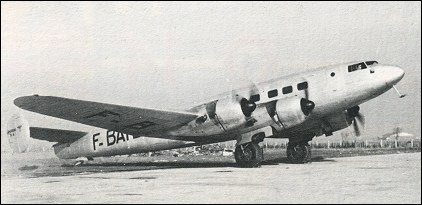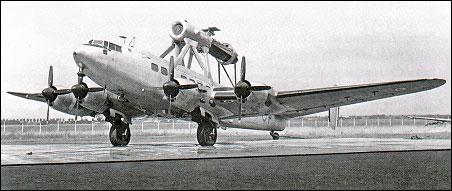 |
Bloch M.B.161 / Sud-Est S.E.161 Languedoc1939 |  |
| PASSENGER | Virtual Aircraft Museum / France / Bloch |
 |
It may seem strange that with France situated conveniently to deploy long-range strategic bombers against virtually any European target, as well as against many other targets in Africa, the Armee de I'Air was not equipped with such aircraft at the outbreak of World War II. This was not due to any reluctance on the part of the French air force to operate such a type, but rather for the same reason that the United States Army Air Corps was not well equipped with Boeing B-17s at that time. Quite simply stated, any allocation of funds could procure more small aircraft than large aircraft, and for some-peculiar reason governments of that era seemed more interested in quantity, rather than smaller numbers of carefully selected aircraft of special potential. Following absorption of Bloch into the nationalised aviation industry as a component of SNCASO in 1936, the design team which had been brought together by Avions Marcel Bloch was involved with a derivative of the earlier but unused 12-passenger Bloch M.B.160. The resulting Bloch M.B.161.01 prototype (F-ARTV) was flown for the first time during September 1939, and a satisfactory result of early tests brought an order from Air France; it was to be almost seven years before the first was delivered. This was due primarily to delaying tactics of the French industry, anxious to ensure that none of the 20 ordered by Germany in 1942 should be delivered. Consequently, it was not until 17 September 1945 that the redesignated SE.161.1 was flown for the first time. Its configuration was that of a cantilever mid-wing monoplane of all-metal construction, having a high-mounted tail-plane with endplate fins and rudders, retractable tailwheel landing gear, and power provided by four 858kW Gnome-Rhone 14N-44/45 radial engines in wing leading-edge nacelles. Standard accommodation was provided for a crew of four and 33 passengers, but in 1951 Air France converted some of its SE.161s to a high-density seating arrangement for a maximum of 44 passengers. Bloch 161.1s, by then named Languedoc, entered regular service on Air France's Paris-Algiers route on 28 May 1946, and on the Paris-Oran-Casablanca and Paris-Marseilles routes in June and July respectively. By October most had been withdrawn because, in addition to problems with their landing gear, they were unsuitable for winter operation. When they re-entered service from March 1947, they had acquired Pratt & Whitney R-1830 engines, de-icing equipment, cabin heating and other modifications. They had also acquired the changed designation SE.161.P7. When production ended a total of 100 Languedocs had been built and, despite landing gear problems that persisted for almost four years, they saw extensive service, not only with Air France but also with the French air force and navy. In addition, five were supplied to the Polish national airline Polskie Linie Lotinicze (LOT).
|  COMPANY PROFILE | ||||||||||||||||||||||||||||||||||||||||||||||||
 |

|


20
reply